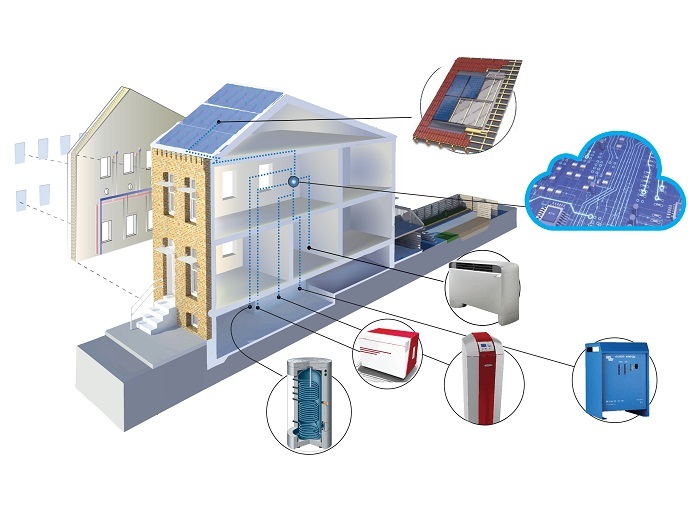Retrofitting toolkit targets enhanced energy efficiencies
Europe’s buildings are responsible for a third of the EU’s energy-related greenhouse gas emissions, making energy efficiency renovations essential for meeting climate goals. The HEART(opens in new window) project developed a range of solutions that support the retrofitting of buildings to improve their year-round energy performance. The project focused on European multistorey residential buildings dating from the second half of the 20th century, located in midlatitude regions with a moderate climate – a category which covers over 1 million buildings.
Cloud-based computing platform
A key benefit of the project’s innovation is that it tightly integrates a number of aspects of managing a building’s energy performance into a single toolkit. “The central element of this is a cloud-based computing platform,” says project coordinator Niccolò Aste from the Polytechnic University of Milan(opens in new window) in Italy. “This runs various active and passive subsystems, designed to transform an old building into a highly efficient smart building.” For example, the platform supports operational decisions concerning the energy management of buildings. It monitors external weather conditions and adapts the operation of heating, air conditioning and other technical systems to provide maximum comfort with minimum energy consumption. The platform also integrates building elements that produce energy, such as photovoltaic roof tiles. Thanks to a heat pump and to latent thermal storages, surplus electricity can be stored in the form of thermal energy to heat or cool the building. Even when solar radiation is poor, the HEART system can exchange energy with the grid. The project also developed techniques and components for the complete or partial replacement of windows.
Successful refurbishment in large buildings
The HEART team used the toolkit to carry out major refurbishments in two large buildings. A key aim was to ensure compliance with Europe’s building energy guidelines on nearly zero-energy buildings(opens in new window) (NZEBs). This means that the building produces at least 50 % of the energy it consumes. “A main challenge was to ensure good interaction between the toolkit’s different components, to guarantee effective operation,” adds HEART project manager Claudio Del Pero, also from the Polytechnic University of Milan. The project consortium successfully completed two deep renovations. In Bagnolo in Piano, Italy, a four-storey apartment block built in 1985 was retrofitted using the whole HEART toolkit. Existing gas-powered generators were replaced with high-efficiency heat pumps. Each apartment was equipped with several smart fan-coils, connected to heat pumps to provide both heating and cooling. In Lyon, France, a large two-storey building built in 1975 was also retrofitted. Multifunctional external thermal insulation and window refurbishment was carried out, to reduce energy demand. “These demonstration projects showcased the effectiveness and practical feasibility of our proposed toolkit,” explains Del Pero. “This helped to raise interest within the market, both in the toolkit as a whole and in its single elements. Some components have since been patented and further developed, including a www.sottile.solar (new photovoltaic tile).”
Upgrading several toolkit subcomponents
A key lesson gleaned from HEART was the importance of involving inhabitants in discussions from the beginning. “Involving users was pivotal to the success of the project,” says Del Pero, adding that inhabitants were kept up to date about installation phases and proposed technologies throughout the process. The success of the project has led to a new EU-funded project, RE-SKIN(opens in new window), which runs until June 2026. This intends to upgrade several toolkit subcomponents to further strengthen and broaden the expected impact of HEART.







